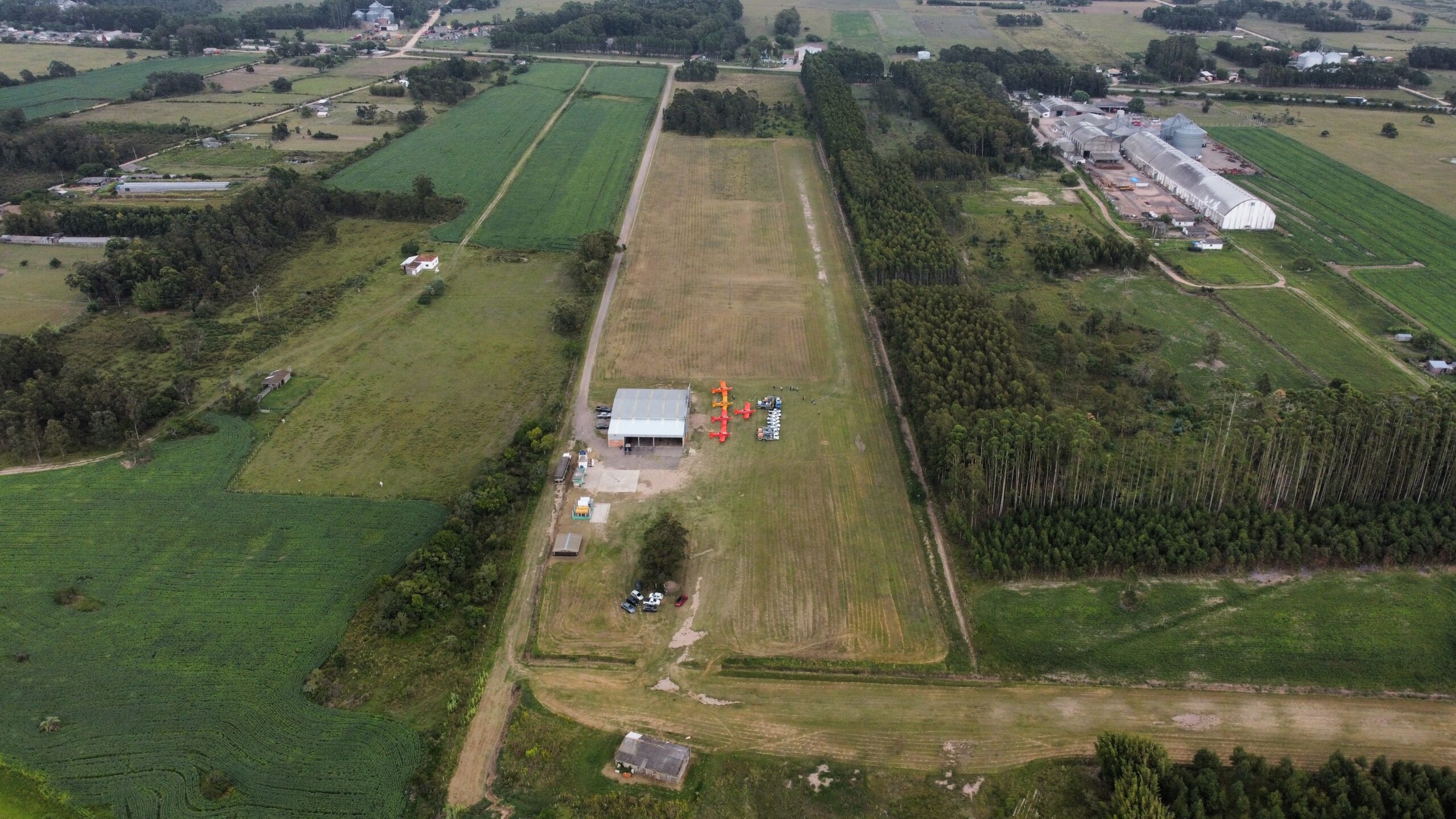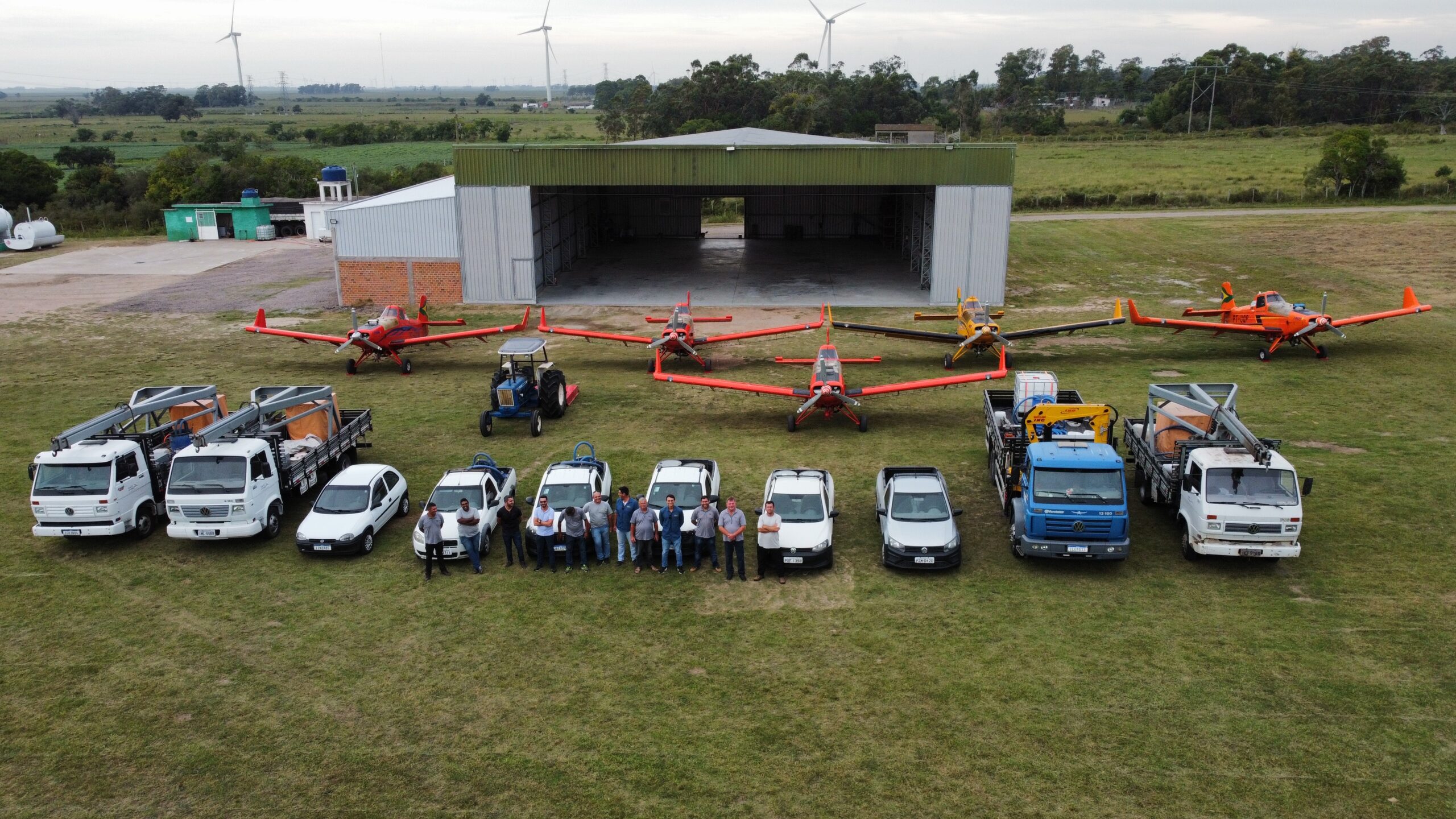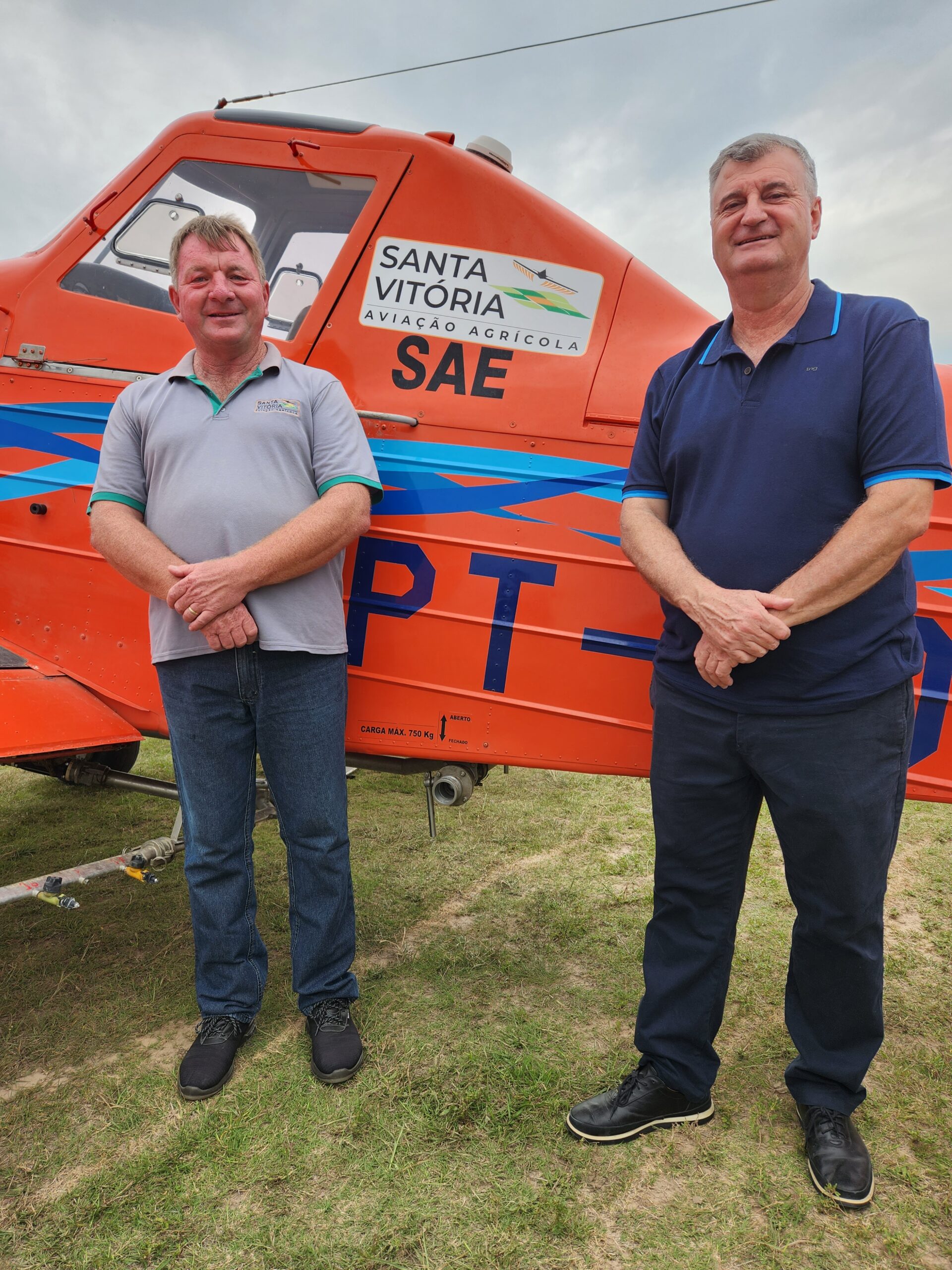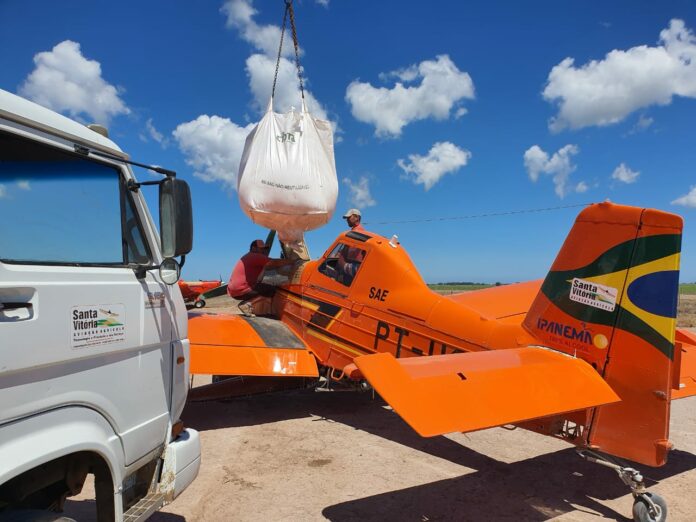by Ernesto Franzen
Santa Vitória Aviação Agrícola started like most operations do: with two friends who partnered up, bought an ag plane, and started working hard. In this case, Enio Strapação De Cezere, an ag pilot graduated in the Escola de Aviação Civil do Aeroclube do Rio Grande do Sul CAVAG in 1994, who founded Santa Vitória in 2005 with another partner, also an ag pilot. In its second year, Ingomar Storch, a very experienced loader working for the company, bought the other partner’s share, who then left to fly helicopters for a government agency. De Cezere and Ingomar had already worked for other operators in the Santa Vitória do Palmar region, a small town in the southernmost tip of Brazil surrounded by rice fields.
They started, as De Cezere says, “with a Cessna and a shack”. They also leased another plane in the first year for the other pilot. And in 2009, they were able to buy their second plane, a 1980 Ipanema 201A that’s in the company fleet to this day. In 2013 they acquired their third airplane, another Ipanema, a 202. In 2016 they built their hangar, and between 2017 and 2019, they replaced the original Cessna Ag Truck with another Ipanema, acquired two more Ipanemas, and opened two remote bases in the towns of Mostardas and São Lourenço do Sul. Their workforce of two employees to help the partners in the first year grew up to 16 today.
The secret behind this success? Besides hard work, experience and dedication by both partners, the fact that De Cezere is not only an ag pilot but also holds a degree in financial management and a postgraduate degree in production engineering, brought this knowledge to the company management. He even created, with the help of his team, a strategic map with a vision – to be recognized as the aerial application operation with the best results – and a mission – to help farmers produce high-quality grains with high performance and safety. The strategic map also lists several ways to reach these missions and visions, which include taking the time and resources to train the workforce and watch for new technologies.
The ability to delegate is also important for the savvy manager; despite being a very experienced ag pilot, De Cezere made Carlos Eduardo Romano the Chief Pilot and Toni Sato the company’s Safety Officer. De Cezere says that Santa Vitória Aviação Agrícola focuses primarily on the quality of their applications, working closely with their customers and their agronomists.
Today, Santa Vitória Aviação Agrícola’s fleet is standardized with the Ipanema, with five EMB-202 burning ethanol and one EMB-201A that still uses avgas. De Cezere says the 202 is the perfect fit for most of his customers’ fields. Besides, Santa Vitória do Palmar is well-known for its strong and near-constant winds. Because of that, many times, it is necessary to make aerial applications in less-than-ideal wind conditions, especially dry fertilizers. In such cases, it is the ability of the pilot to take off and land in those conditions that dictate the continuity of the operation, and De Cezere says what most Ipanema pilots know – that the Ipanema is easier to handle in a crosswind than a Cessna.
Santa Vitória’s Ipanemas are equipped with STOL fan jet nozzles and, for some applications, rotary atomizers. Dry applications are made with STOL spreaders. Four of the Ipanemas have Satloc Bantam GPS units, and the other two have Vektor units.

Santa Vitória’s season starts between August and September, with glyphosate applications on fields about to be seeded with rice. A second glyphosate application is done when the rice is about to sprout, sometimes with some other herbicide in case resistant weeds are present. Occasionally, a third herbicide application is done if those glyphosate-tolerant weeds are still in the field. By December, one or two urea applications are made at between 60 to 80 kg/ha (53 to 71 pounds/acre). Many farmers do the first urea application by ground rigs. After that, Santa Vitória Aviação Agrícola will usually be asked by the farmers to make an application of fungicide on the rice. In January, applications on soybeans are made, usually two, incorporating fungicides and insecticides as necessary. Often, liquid fertilizers are applied, both on soybeans and rice. All liquid applications are done at 20 lts/ha (2 GPA).
Santa Vitória applications are 60% made on rice and 30% on soybeans, which end in March. The 10% left are cover crops that are seeded until June, when the company’s season effectively ends.

Years ago, rice was the only crop grown in Santa Vitória do Palmar, and virtually all applications were made by airplanes. With increasing soybean prices, soybean farmers moved into the area and brought self-propelled ground rigs with them. They found they could use those rigs on rice too, and now they became competitors for the local ag operators.
Santa Vitória Aviação Agrícola operates in about 20 satellite strips, distant up to 100 kilometers (60 miles) from the base, plus a remote base in the city of Mostardas, about 390 km (240 miles) from the base, where one pilot and a loader operate the single EMB-201A in the fleet.

Most new operations operate smoothly when they’re small; with one or two ag planes, the skills necessary to run them are just those a pilot has. It is when they grow up, with more equipment and employees, that administrative pains show up and drag down those whose owners lack the necessary knowledge to deal with them. That is the reason SINDAG has been promoting so many administration courses, and AgAir Update has brought “Papo de Gestão” as a monthly column. Santa Vitória Aviação Agrícola’s success, brought by a trained administrator who knows how to set priorities, establish procedures, and motivate his team, proves this is the recipe for success.





